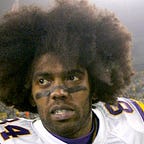Keep it Simple. Invest in Exchange Traded Funds.
If I had to choose one investment vehicle for the rest of my life, I would choose exchange traded funds (ETFs) and here’s why.
- They are CHEAP. Within all investments (outside of individual stocks) there are these things called expense ratios. An expense ratio can be looked at like a management fee. The average mutual fund has an expense ratio of .70% (source: Nerd Wallet). Meanwhile the average ETF exchange ratio is .11% and can go even as low as .04% with iShares Core S&P 500 ETF (symbol: IVV).
- Performance. 86% of actively managed funds (think mutual fund, hedge fund, etc.) underperform the benchmark index they are TRYING to beat. Why would you pay more money for someone to TRY and win?
- Diversification. Similar to mutual funds, an ETF is a great way to diversify your investments. ETF’s typically invest in hundreds of different companies within the underlying index.
- Piece of Mind. 86% of the time you will outperform your neighbor who stresses out everyday trying to beat the market. Buy an ETF and forget about it!
A Quick explanation of an ETF if you’re having trouble conceptualizing what it actually is.
One thing about investing that I find to be funny is how taboo it is. It’s almost like financial people come up with these elaborate ways to explain things with just enough confusion that you nod your head yes to move on with the conversation. Here’s the most human way of conceptualizing an ETF.
First the ETF is going to have a name, examples:
iShares Core S&P 500 ETF (symbol: IVV): iShares is the investment group and the S&P 500 is the benchmark they are mimicking.
Vanguard Small-Cap Value ETF (VBR): Vanguard is the investment group and it tracks a small-cap value index.
Think of an ETF as a Chipotle burrito. You have your bowl which houses all the ingredients (if you’re going straight tortilla then you have no reason to be investing). There’s a specific ratio of beans/meat/rice etc. that you want to be around at all times — this is your benchmark index. So when you ask for rice and the guy gives you a half scoop and you quickly snap at him to double it up, that’s exactly what an ETF does when a stock in the portfolio becomes underweighted. The goal of the ETF is to track its benchmark index (or the perfect burrito) as closely as possible.
If you liked this article, click the💚 below so other people will see it here on Medium.
